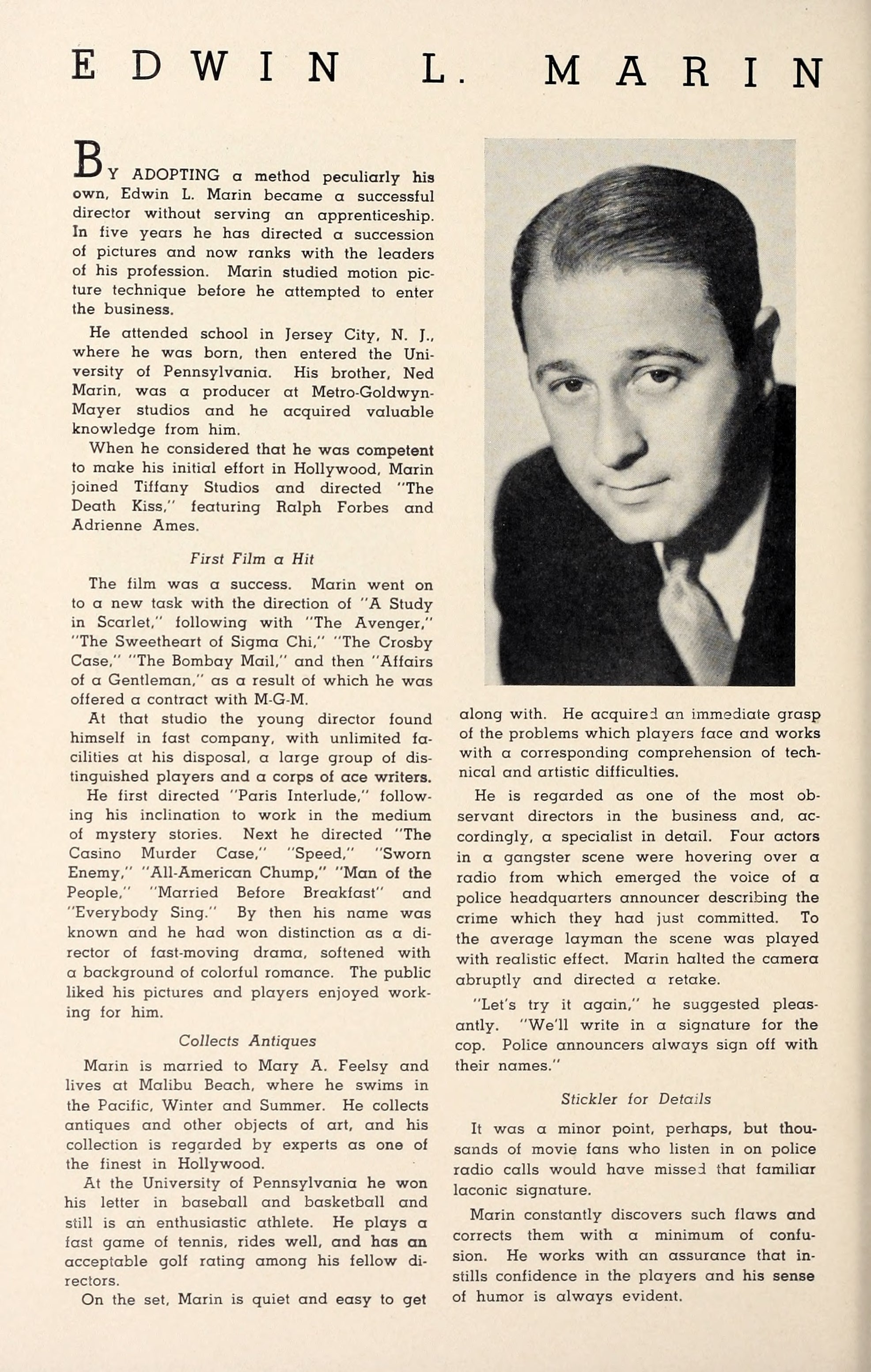Edwin L. Marin (Who’s Who at MGM, 1937) 🇺🇸

By adopting a method peculiarly his own, Edwin L. Marin became a successful director without serving an apprenticeship. In five years he has directed a succession of pictures and now ranks with the leaders of his profession. Marin studied motion picture technique before he attempted to enter the business.
He attended school in Jersey City, N. J. where he was born, then entered the University of Pennsylvania. His brother, Ned Marin, was a producer at Metro-Goldwyn-Mayer studios and he acquired valuable knowledge from him.
When he considered that he was competent to make his initial effort in Hollywood, Marin joined Tiffany Studios and directed “The Death Kiss,” featuring Ralph Forbes and Adrienne Ames.
First Film a Hit
The film was a success. Marin went on to a new task with the direction of A Study in Scarlet, following with “The Avenger,” “The Sweetheart of Sigma Chi,” “The Crosby Case,” The Bombay Mail, and then “Affairs of a Gentleman,” as a result of which he was offered a contract with M-G-M.
At that studio the young director found himself in fast company, with unlimited facilities at his disposal, a large group of distinguished players and a corps of ace writers.
He first directed “Paris Interlude,” following his inclination to work in the medium of mystery stories. Next he directed “The Casino Murder Case,” “Speed,” “Sworn Enemy,” “All-American Chump,” “Man of the People,” Married Before Breakfast and “Everybody Sing.” By then his name was known and he had won distinction as a director of fast-moving drama, softened with a background of colorful romance. The public liked his pictures and players enjoyed working for him.
Collects Antiques
Marin is married to Mary A. Feelsy and lives at Malibu Beach, where he swims in the Pacific, Winter and Summer. He collects antiques and other objects of art, and his collection is regarded by experts as one of the finest in Hollywood.
At the University of Pennsylvania he won his letter in baseball and basketball and still is an enthusiastic athlete. He plays a fast game of tennis, rides well, and has an acceptable golf rating among his fellow directors.
On the set, Marin is quiet and easy to get along with. He acquired an immediate grasp of the problems which players face and works with a corresponding comprehension of technical and artistic difficulties.
He is regarded as one of the most observant directors in the business and, accordingly, a specialist in detail. Four actors in a gangster scene were hovering over a radio from which emerged the voice of a police headquarters announcer describing the crime which they had just committed. To the average layman the scene was played with realistic effect. Marin halted the camera abruptly and directed a retake.
“Let’s try it again,” he suggested pleasantly. “We’ll write in a signature for the cop. Police announcers always sign off with their names.”
Stickler for Details
It was a minor point, perhaps, but thousands of movie fans who listen in on police radio calls would have missed that familiar laconic signature.
Marin constantly discovers such flaws and corrects them with a minimum of confusion. He works with an assurance that instills confidence in the players and his sense of humor is always evident.

Collection: Who’s Who at Metro-Goldwyn-Mayer (1937)
